
Tennis Technologies
When it comes to sports technology, tennis is one of the sports that is well covered with it. If we go check out Tennis Techie (who has one of the most well-resourced sites I know on tennis technologies) we can see they have classified tennis tech products into eight categories. From Club Management to Player wellness Apps, Statistical Apps and Match analysis Apps, Swing sensors, Video analysis Apps and Smart Courts. With a lucky eighth category being “Other Tech” just so they don’t miss out on anything. Basically, there are lots of different technologies developed for tennis. Of course, some of the technology can are used or adapted in other sports.

We did a review of Smart tennis sensors a while back which covered a bunch of Swing sensors including those that we mount on the tennis racket handle, sensors that are embedded within the racket, sensors built inside dampeners and there are sensors worn on athletes. They essentially try to achieve the same three goals – 1) capture performance/motion data of the athlete swinging the racket during play, 2) analyse that data and 3) provide feedback to help with training.
In this article, we have a look at another category of technology that can also capture athlete performance -> Smart Courts. A Tennis court is considered a Smart Court when the (tracking) technology is installed permanently or semi-permanently on the court and is placed/secured in such a way that doesn’t interfere with the athletes’ movements or get in their way when playing a match. We have largely relied on TennisTechie’s list/recommendations and also added a few other technology products out there that are either already in the market or planning to launch. The most common (hardware) technology used among them is a combination of camera and computer vision. Besides that, there is also radar, sound sensors, lasers and pressure sensors (or smart flooring). Instead of simply focusing on the technologies, we want to look at things from the application’s perspective of which we think there are really two main application areas:
- officiating during competitions – line calls, match statistics, video replays, data analytics for fan engagement and streaming
- coaching/training facilities – athlete tracking, video analysis, on court feedback and gamification
Between these two, we see that generally the size of the technology (and pricing) is much higher in the first application. We also notice that the technologies developed for coaching and training facilities tend to be more recent developments (within the last 4-5 years) compared to the first category. Some of the technology companies have different offerings in their solutions that cover both officiating and training. I am also adding a third category into this mix and they are portable tracking solutions that do either officiating (doing line calls and capturing match statistics) or training applications. So let’s have a look at the different technology products in those 3 areas.
Officiating During Competitions
There are 3 product companies that I would put in this category and they are FlightScope Tennis, Hawkeye Innovations, and Foxtenn. There are others that can be used in officiating competitions as well but these three have not only been approved by International Tennis Federation (ITF) as Player Analysis Technologies (PAT) but they have actually been used in international tournaments such as Grand Slams, WTA and ATP events.
Flightscope Tennis
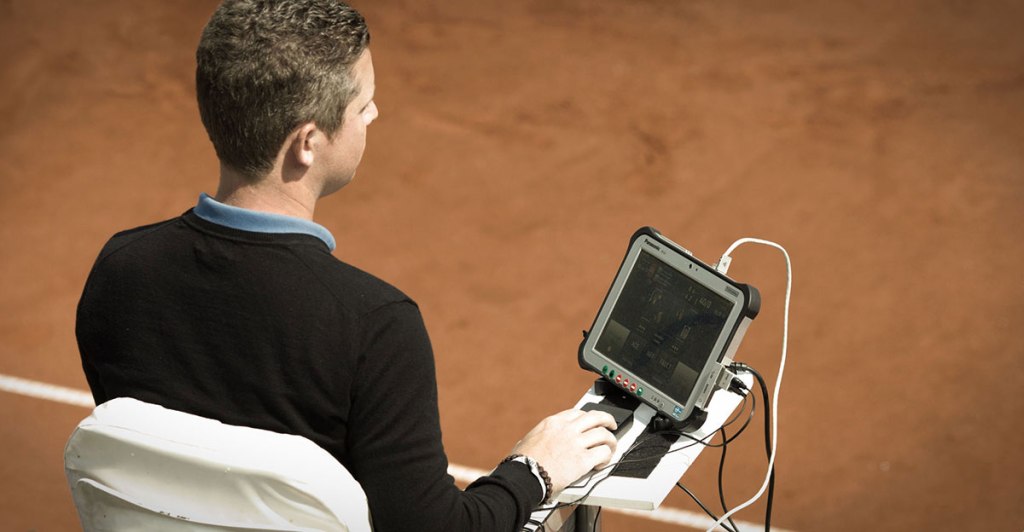
FlightScope Tennis probably has the longest history and they are made up of a few amalgamations of technologies and systems developed over the years since 1984. From the Referees Office System to the tennis radars (originally designed for military applications) and event management plus the digital side of things. The multiple mergers formed FlightScope Tennis as we know today and the systems we see today include the Live Scoring System and Line Calling System which also consists of Ball Tracking and Player Tracking.

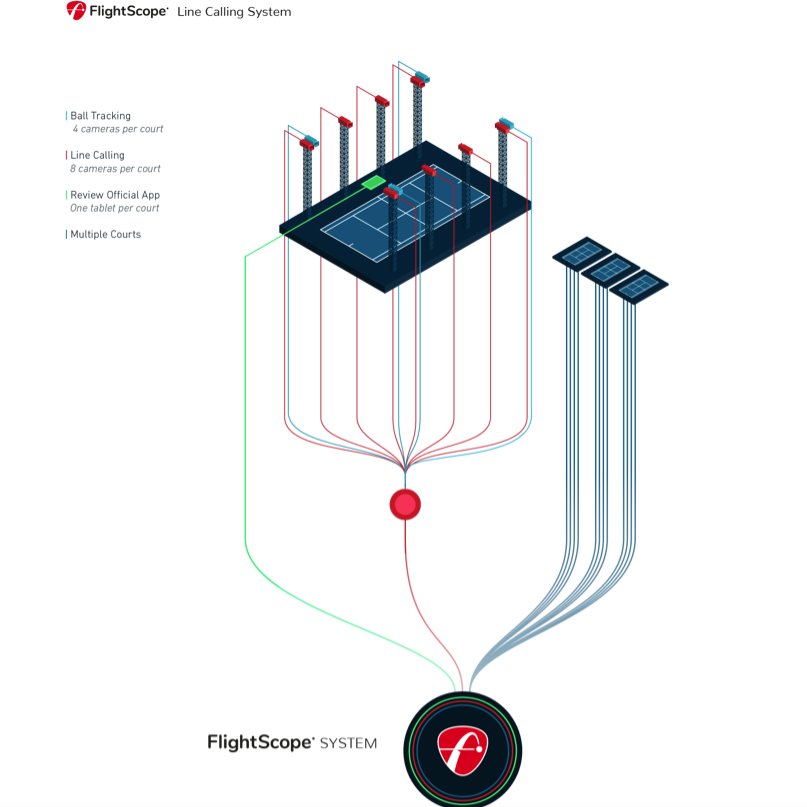
The Live Scoring System as we can see from the above diagram mainly relies on cameras and radars and a ProScorer which is a tablet tool for the umpire. All the data collected are then displayed on the various on-court outputs and further to the public media.
The Line Calling System mainly consists of cameras mounted around each court with 4 high speed cameras for Ball Tracking and another 8 cameras dedicated to Line Calling. During Line Calling, the camera data gets processed and provides an update to the umpire through the Review Official App. The additional Ball Tracking data such as flight parameters and trajectories plus Player Tracking data such as movement patterns and heat maps provide for additional commentary as well as analytics for the various stakeholders of the sport.
Hawkeye Innovations

Hawkeye was developed back in 1999 and it was first used in cricket (in 2001) in a Test match between Pakistan and England. It was then used in tennis (Davis Cup) in 2002, then the Australian Open in 2003 and it became an official tennis officiating system in 2005. More of their timeline here – link. In competitions, it is mainly used for Electronic Line Calling during games and the system also provides statistics on individual players, on every shot/serve and rallies.

Essentially, their tracking system is based on the principles of triangulation using visual images and timing data captured from high-speed cameras setup around the stadium; and the cameras are calibrated and synchronised prior to each event. The cameras are usually placed high above the courts in such a way that they can capture the trajectory of the balls with minimal obstructions. Although there has been some disputes with its line calling accuracy (up to 3.6 mm error), it has been generally accurate except for some edge cases. It has been used in most tennis Grand Slams with the exception of the French Open which is played on a clay court where the marks left on the clay is enough evidence for a line call.
Foxtenn Technologies

Foxtenn Technologies can be considered the new kid on the block. Founded in 2012, the Barcelona based start up developed a technological system to rival the status quo of line calling accuracy. Their system consists of 40 (ultra) high-speed cameras and 10 high-speed lasers placed around a court. Each high-speed camera can capture images at 2500 frames per second (FPS) which is more than 10 times compared to others. Another difference with their cameras is their placement – the cameras are placed at the end of the court lines at ground level instead of just high above the court ground.

Foxtenn is confident that with their ground approach, they address lots of potential errors found in other existing systems. Firstly with cameras mounted above the stands, there is a chance of the tennis balls being obscured by players or objects moving between the cameras and the court. But with ground cameras, they are so close to the action there is minimal or no chance of the tennis ball being obscured. They also believe that in cases where cameras are mounted above the stands, the cameras can be more sensitive to wind vibrations and even fans walking in the stands. Then in systems that estimate the trajectory of flight, the tracking may be affected in cases where the ball hits the net, or when the ball is a high lob or is affected by wind. This could lead to a less accurate estimation of where the ball landed. Whereas Foxtenn captures actual footage of the bounce, their tracking isn’t affected by those situations. With them getting certified and approved by the major tennis federations, they could become a strong contender for becoming the Line Calling technology of choice in more major tennis competitions.
Coaching & Training Facilities
In this next application category, we look at products that are targeted at tennis clubs/academies/training facilities where coaches might use the tracking technology to assist them in training and monitoring their players progress. Member of the clubs could track their own games to get a better understanding of the play or simply track their game scores for bragging rights. Some clubs might even utilise them to officiate local or national competitions. The technology are mostly installed permanently in the facilities. There are a quite a handful of companies who have developed solutions in this category. They include:- AccuTennis, Mojjo, Playsight, Wingfield and Zenniz. Even Hawkeye and FoxTenn whom we mentioned earlier have developed solutions for coaching and training in tennis academies. But I will be focusing on those first five here. Generally they all have these common features:
- They mostly rely on cameras and computer vision to track players and ball
- They have a touch screen interface or kiosk for users to sign-in and start their game or training session
- The systems capture videos of each play or session, allowing users to watch a replay (sometimes in different angles)
- The systems are usually connected (to the internet) so all video & data gets uploaded to the cloud
- They come with an end-user app so users can review their game or training stats, share it with their coach or on social media
AccuTennis






First off, we have AccuTennis. AccuTennis has cameras (22) set up around each court to track all the tennis activities, speakers to provide audio feedback during game play or training and a double-sided LED display mounted at the side that shows the score or provides visual feedback of the session. A tablet accompanies each AccuTennis court to allow coaches and users to sign-in and start their session. The system includes coaching tools where coaches can sign-in to create drills and custom training programs for their players. Coaches can track and monitor the progress of their players – whether they have acheived the goals set for those sessions and identify where they need to work on more. Besides training sessions, the system does game tracking stuff as well, such as line calling , score tracking, working out statistics as well as capturing video. Post game, the system generates more numbers and heatmaps for analysis and the videos are categorised based on shots and game play so players can review specific segments of their game, annotate and playback at different speeds. At the moment, it looks like their system is mainly for indoor courts and they are only available in the US.
Mojjo
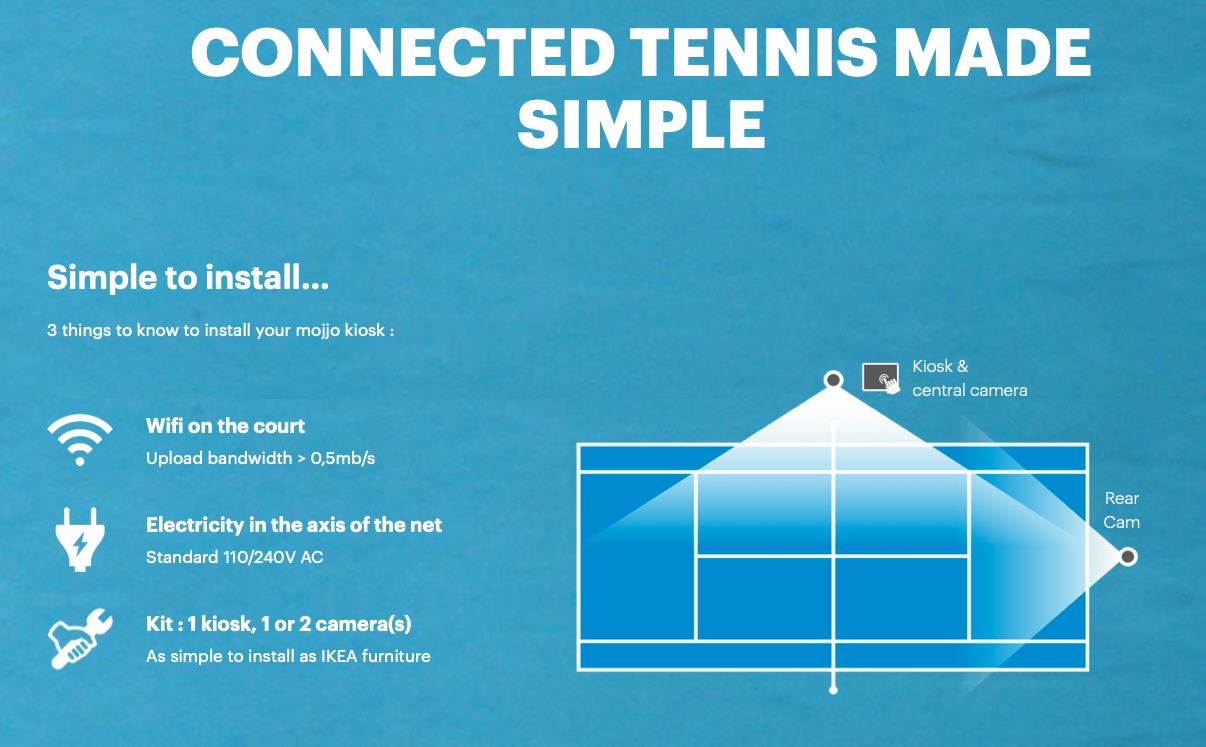



Mojjo is a Smart Court Technology company based in France. Their camera based system comes in 2 versions: a Premium version setup with two HD cameras (one in the middle of the court and one in the rear) and a touchscreen kiosk for users to interact with the system. There is also the ‘lite’ version with just one HD camera (in the rear). Both versions have outdoor options as well which is essentially a roof structure that protects the kiosk from the elements. Besides most of the coaching, training and game tracking features that are mentioned earlier and are roughly similar, there are a a few unique features of Mojjo. One of it is the abillity for a user to utilise their mobile phone as an additional (third) camera to capture footage while synced to the main system. Using the Mojjo Remote App, the mobile phone can be placed anywhere on the court providing a custom perspective on top of the central or rear view. Another interesting feature is their live streaming of games onto YouTube or Facebook Live. We have heard feedback that their solution is rather intuitive as well as a practical option. From their website, it looks like they are currently available mainly in Europe, some parts of the US and a couple of locations in Melbourne Australia!
PlaySight Interactive






PlaySight has what they termed a Smart Sports AI (artificial intelligence) System. It is a system based on cameras, computer vision and AI. Similar to FlightScope, PlaySight’s technology has roots in military applications. Though it is now used in many different sports, PlaySight was first built for tennis players – to help them improve their game using advanced technology. Currently, their Smart Court Pro (High performance) can have up to 10 cameras, all of which are synced for a multi-angle viewing experience whether in real-time or post game. Each Smart Court is equipped with a kiosk allowing users to sign in, create their drills and start tracking their training or game session. There are options for various audio feedback and users/coaches can stop/pause at any time to review the video or statistics. Post game or training, users can still access all their data on their mobile app. It has been said that their in-depth data and analytics is one of their main strengths. Other interesting features of their app include: 1) the ability for users to create their own highlight videos and share it with coaches, friends or social media; 2) users can upload their own videos if it wasn’t recorded on a Playsight Smart Court and still review and analyse it and 3) access to live streaming and on demand events. Where to find a Playsight Smart Court? – they can be found in many locations in the US, Europe and some parts of Asia Pacific.
Wingfield






Wingfield is a start-up based in Germany and they developed a solution that is also camera based although it is slightly different from the ones we talked about earlier. One way to describe it is: it’s a compact system that is designed to blend into the tennis court. The Wingfield Box replaces either one of the two net posts and it houses a touch screen and two high speed cameras pointing to each side of the court. In addition, there is an IP camera that can be mounted anywhere around the court to capture a full view of each session. It has most of the coaching, training and tracking features that has been mentioned previously including things like video analysis, strokes tracking, performance measures and data analysis etc. A couple of unique features of their system that stand out include 1) a simplified way for players to sign-in using their Wingfield app and personalised QR code, 2) Stroke Scores which provides a single metric for users to understand the quality of different types of strokes and to be able to compare their progress over time. There isn’t much information on how exactly the Stroke Scores are derived but it does simplify and to some extent gamify training.
Zenniz

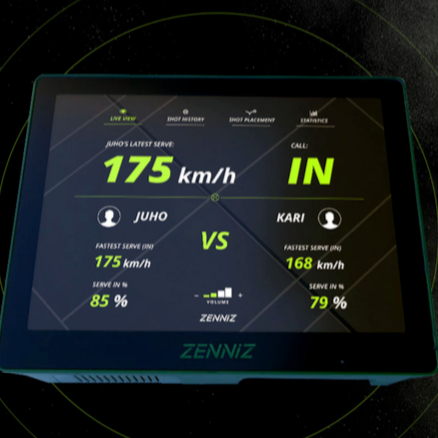


Zenniz is another startup that has developed a “net post camera solution” that is meant to be installed permanently on a tennis court. They are based in Finland and it seems like they are still in the process of finalising their product to be launched. But from what we can gather, here are some interesting information about their sustem. One first glance, it looks similar to Wingfield in that it consists of a “box” (or kiosk) that is installed in place of one of the net posts. The kiosk has a touch screen on the top with two video cameras that captures activities on each side of the court. There is also a baseline video camera that provides the full court view. The few key differences in its system (compared to Wingfield) is firstly, the kiosk has two LED screens – one facing each side of the court that gives real-time feedback of the score and statistics. Secondly, the system also consists of 30 sonar sensors placed around the court, and all the cameras and sensors are able to provide ball tracking accuracy of up to 1cm. As mentioned, Zenniz is yet to launch, and club or facilities operators who are interested in their system could get in touch through their website.
Portable Tracking Solutions
In this third and last category, we look at portable tracking solutions – technology products that are not installed permanently on a court. They can be owned by clubs or owned by individual players. There are a couple of solutions that I will put in this category and they can achieve most of the tracking capabilities we have mentioned earlier but there are a few main differences:
- They are portable so they require setting up on the tennis court before a game or training session
- There are no kiosks or large touch screen devices
- They might require calibration after they are set up and before tracking starts
Baseline Vision
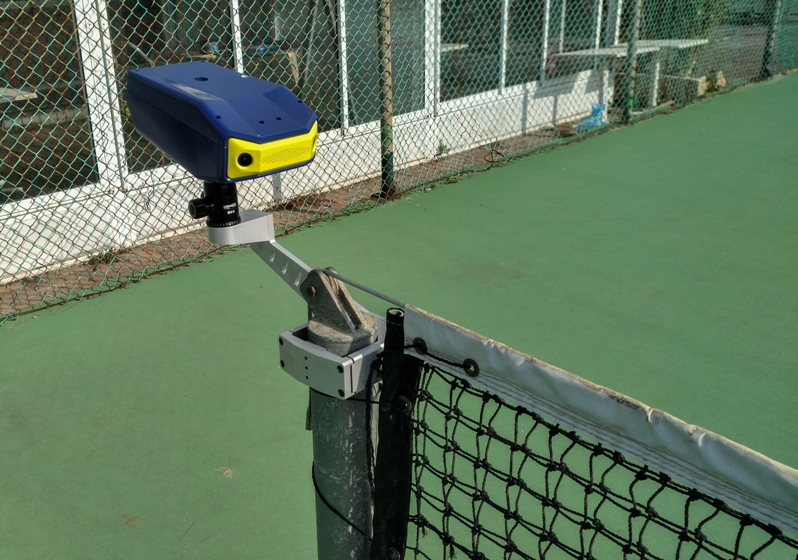


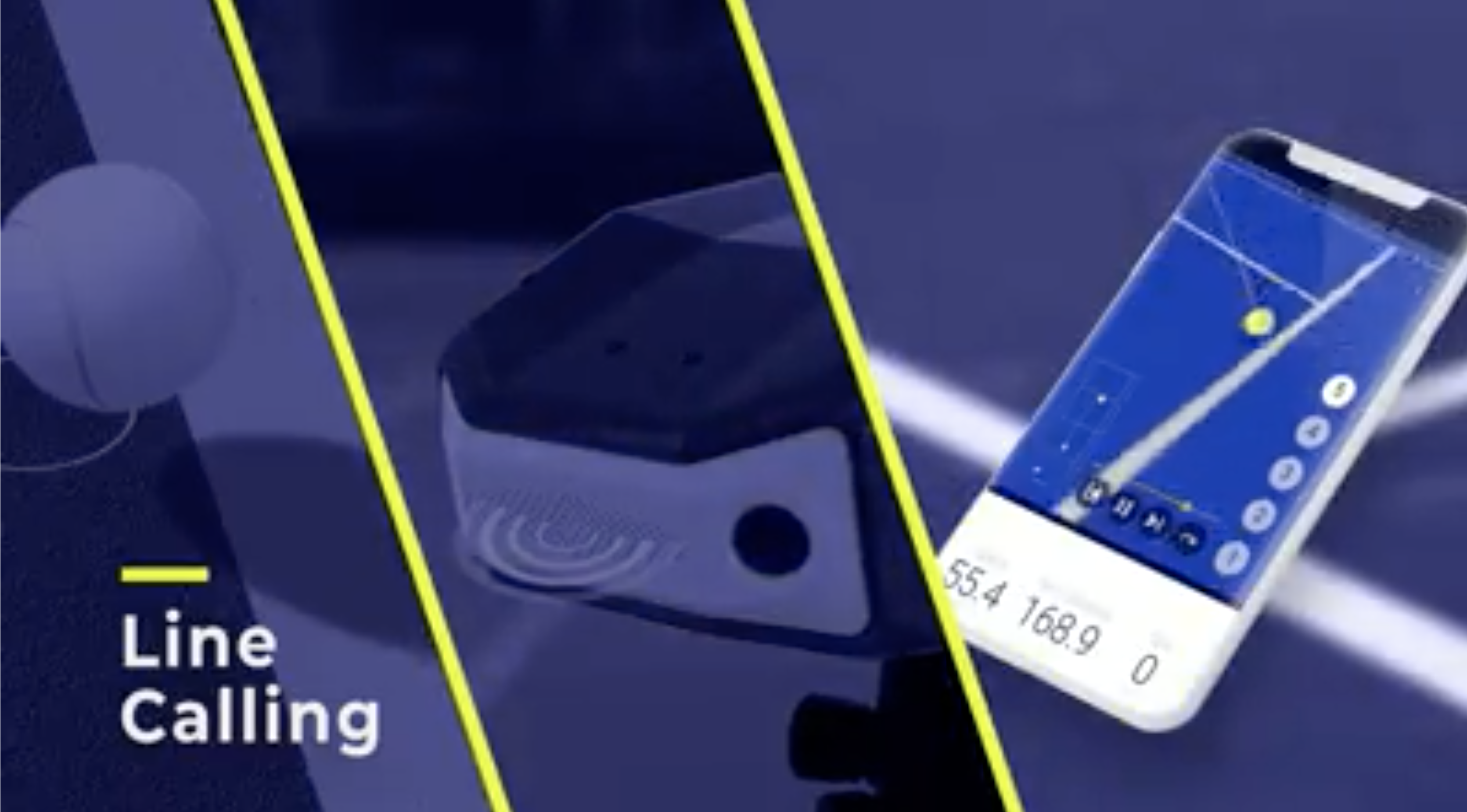

Baseline Vision is a startup based in Israel that has developed a portable camera system that can be mounted on a net post. You could say it is a stripped down version of the “net post camera solutions” covered previously. It has none of the extra sensors or camera around the court; it simply has two video cameras built in the net post unit with each camera pointed on each side of the court. The unit only takes a minute to setup on the court and it is completely wireless – meaning it has its own internet and rechargable power. It’s main features include line calling, getting real-time audio feedback, training tools and video analysis tools etc. Users need to download their mobile app in order to interact with the unit. I initially thought Baseline Vision would sell direct to players but apparently the units are sold to club and facility operators and they in turn lease it to players who want to track their game or training. They are currently in pilot phase and are planning to launch commerically in Canada around the end of 2020.
In/Out Tennis


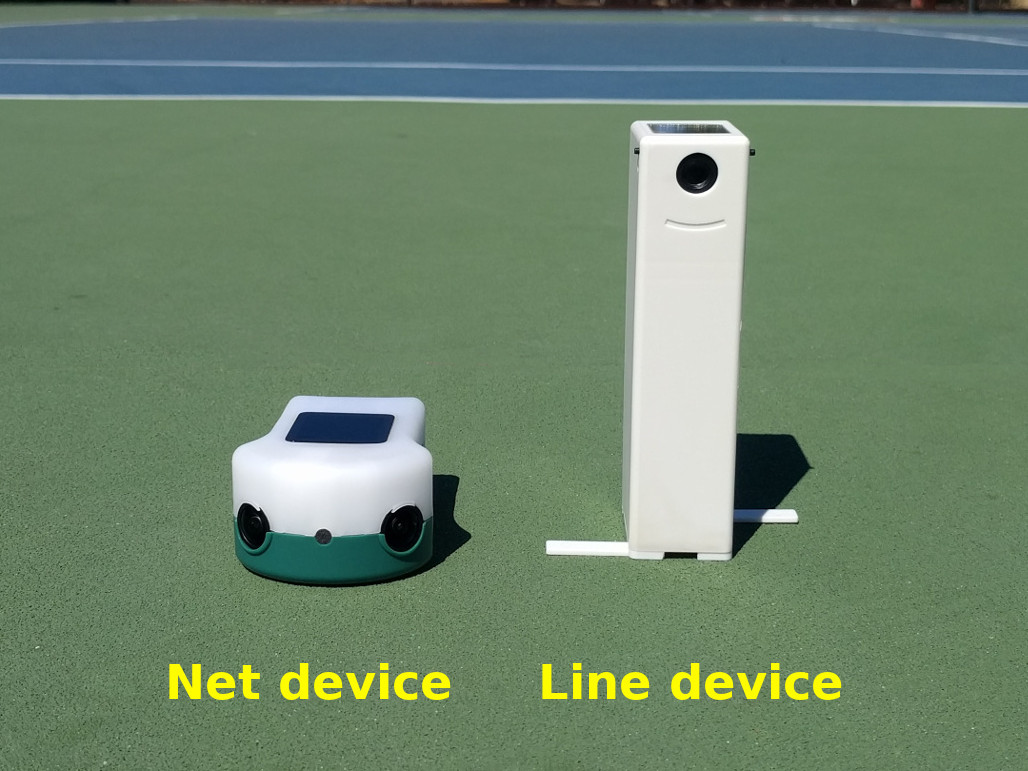


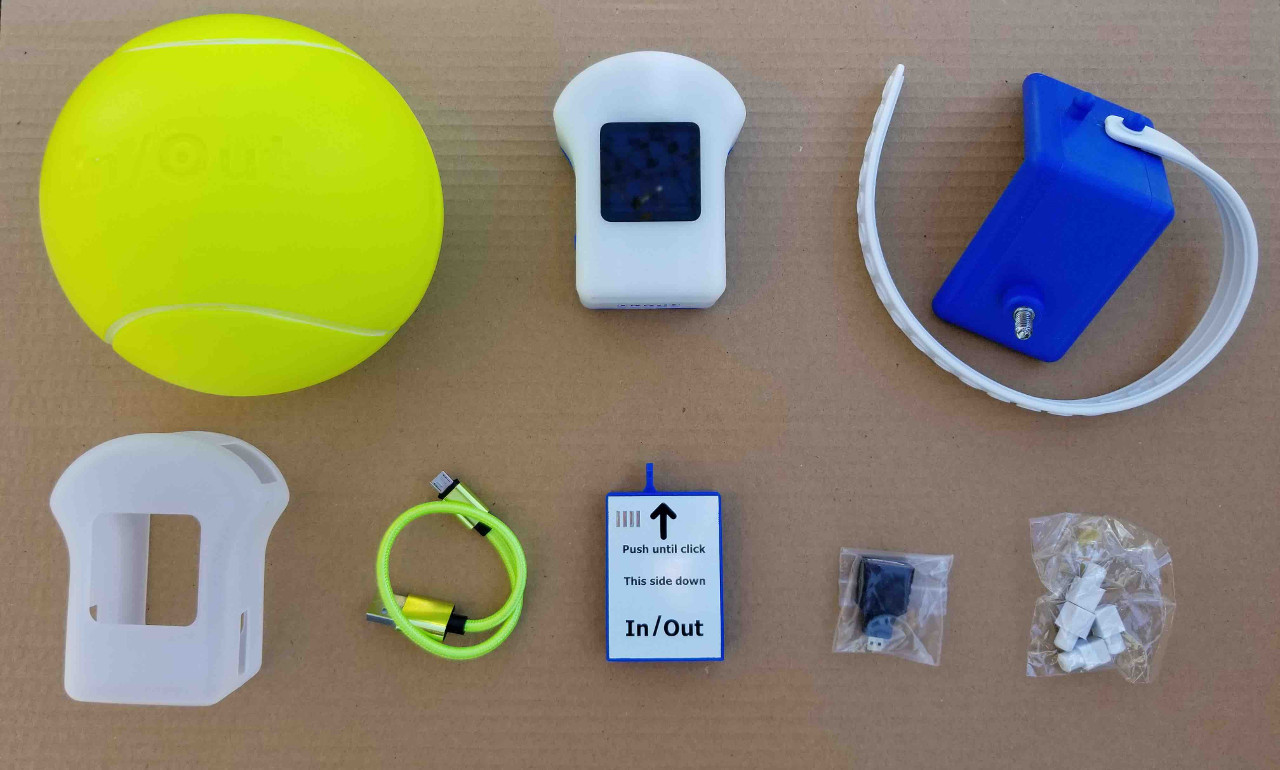
In/Out Tennis or Tennis In/Out is basically quite similar to Basline Vision. In fact, it looks more compact – like a miniature net post camera/kiosk. There is the Net device with the 2 video cameras which is the portable unit secured on top of a net post. When it is mounted on (the net post) and started up, the Net device has a small touch screen on top of it for users to navigate through its various functionalities. Like most of the devices/systems mentioned earlier in the second category, the In/Out Net Device provides most of the video recording and computer vision capabilities for line calls, stats and performance analysis. A unique part of the In/Out system is the ability to increase its tracking capabilities by adding another Net device on the other net post. Not only does it increase the tracking accuracy, it enables tracking of a doubles game. Since their release of Version 2.0, they have also added an additional piece of hardware which aims to increase the line calling accuracy – and that is their Line device. It is another camera based device meant to be placed on the ground capturing where balls land with respect to the line it is monitoring. So the nice thing of what they offer is a user could start from the basic of having one Net device or go as advanced as buying 2 Net devices and 8 Line devices for more accurate tracking. For people who are concerned about the Net device getting damaged by a high speed tennis ball, they have designed a protection cover called a ‘Cage’. At the moment, In/Out is shipping to over 60 countries and there’s more information on their website’s FAQ page.
Eyes3






Eyes3 is another portable solution that relies on cameras. From what we can see, their main application is in officiating matches – line calling and providing match statistics. The difference in their solution is they basically use the iPhone as the camera. Users can track one side of the game using one iPhone and have its (back-facing) camera covering that side of the court, or use two iPhones to track both sides of the court. Their software allows up to 10 cameras (iPhones) to be setup on a court to capture videos from different views. An additional iOS device can also be used as the control or management of the cameras. The main requirement for using Eyes3 software is to have the iPhone 7 or newer running iOS 12 or newer. Each of their software license allows up to 12 devices to be installed. There is no Eyes3 specific hardware but they do recommend that secure mountings be used to hold the iPhone during use because any movements to the iPhone can affect the accuracy of the recording and line call measures. Looking at their online store, it looks like they also suggest having an external battery backup for each iPhone because continuous video camera usage drains the iPhone battery quickly.
SwingVision





Talking about using iPhones, the last solution in this portable category is SwingVision. SwingVision’s solution relies on one iOS device (iPhone or iPad) and its camera to analyse a player’s shots, keeping track of the statistics and video highlights. Not all iPhone or iPads are supported though, only the ones that can run iOS 13 or iPadOS. Then for close to real-time analysis (the moment recording ends), only the newer devices will allow that (iPhone XR/XS, 11/11 Pro, SE 2020, iPad mini 5th gen, iPad Air 2019, iPad Pro 2018+). The iOS device needs to be mounted behind the baseline either on a tripod or on the fence. The important thing is for the camera to be able to get a view of both alleys entirely. Amazingly, using a single camera, it is capable of delivering many of the features mentioned above including swing and ball tracking (stroke types, speed, spin, in/out, placement, racquet contact), shot analysis, video analysis, training and coaching features. A couple of unique features of the SwingVision app is: 1) the training drills which allows players to train on their own, and 2) the integration with Apple Watch which allows players to get a real-time video preview, start and end recordings, get real-time stats and tag favourite shots. Anyone can download the iOS app right now which is free to download and users can just track with the free version (which covers training drills, swing tracking and limited ball tracking) or subscribe to the pro version which includes everything. A lot of their features and how it works remind me of the HomeCourt app; which I believe is the smart way to do it considering newer smart phones have so much capabilities in terms of camera technology and processing abilities and it means its not an extra piece of equipment for players to carry.
Comparison And Overview
Comparing the 12 different systems, they mostly revolve around cameras and computer vision but there are also sonar, radar and lasers. For cameras, there are also some differences in terms of the number of cameras, their frame rate, placement locations and basic lighting requirements. All these affect the accuracy of the tracking. Rightly so, the ones with more sensors or cameras will have much higher accuracy in terms of line calling or capturing hard metrics like speed and distance. For those technologies that have been approved by ITF (international tennis federation), they would have met the requirement of equal or less than 5mm error during line calls plus other evaluations. The breadth (different types) and depth (high accuracy) of the data collected in official competitions isn’t restricted to officiating purposes. Coaches and professional players can benefit greatly from those match data to better understand their performance in an official game setting. Not too long ago, IBM announced a new solution in partnership with the US Tennis Association (USTA) called Coach Advisor. This provides USTA coaches with additional metrics related to the athletes’ physical performance including physiological load and mechanical intensity, and how they relate to different match situations. I reckon it will be hugely beneficial if this type of solution become implemented across the various major international competitions.

[side note: There was one other technology I originally intended to cover and that is smart flooring technology. But looking at the company website (Technis Smart Flooring) that developed that technology, they no longer have a focus on their Tennis application. ]
In terms of usability and adoption by the wider tennis community, the accuracy of line calling or speed measurements or even the in-depth statistical analysis might not be the most critical. Rather, there might be more preference on features such as live streaming, instant video playback or visual feedback and training drills. We reached out to Alex Johansson who runs Tennis Techie and he had lots of views on the subject of smart courts but below are some key thoughts particularly for people considering the different technologies.
Additional thoughts from Tennis Techie:

Firstly, for people who run tennis facilities or decision makers in tennis organisations/clubs, it is high time to invest in technology. The returns may not be immediate but it will make a huge difference (to all the stakeholders) in the long run. Then for those who are looking for options, make sure to do up to date research as things (technologies and developments) are moving fast in this space. On the other hand, there are many (tennis) companies with plans and promises of great features and lower prices but very little is proven with a track record up to date. Make sure to start with the actual need for the facility before deciding on a system. When consulting with facilities, Alex has often found there is a disconnect between what coaches/players and management feel is important. So it is critical to get alignment from all stakeholders and users about their needs. The processes of productively using smart courts for player development generally still need a lot of work; there are maybe only a handful of coaches/organisations that are pioneering productive use in this area.
That is all we have for this piece on smart tennis courts in 2020. I hope that is helpful for people who are exploring smart court options and technologies. There could be some products out there that we missed. Feel free to leave a comment about them and perhaps a link of the product. Many thanks again to Alex from Tennis Techie for chiming in and sharing his thoughts. Do check out his site for more productive tennis technology ideas. With that, thanks for reading!

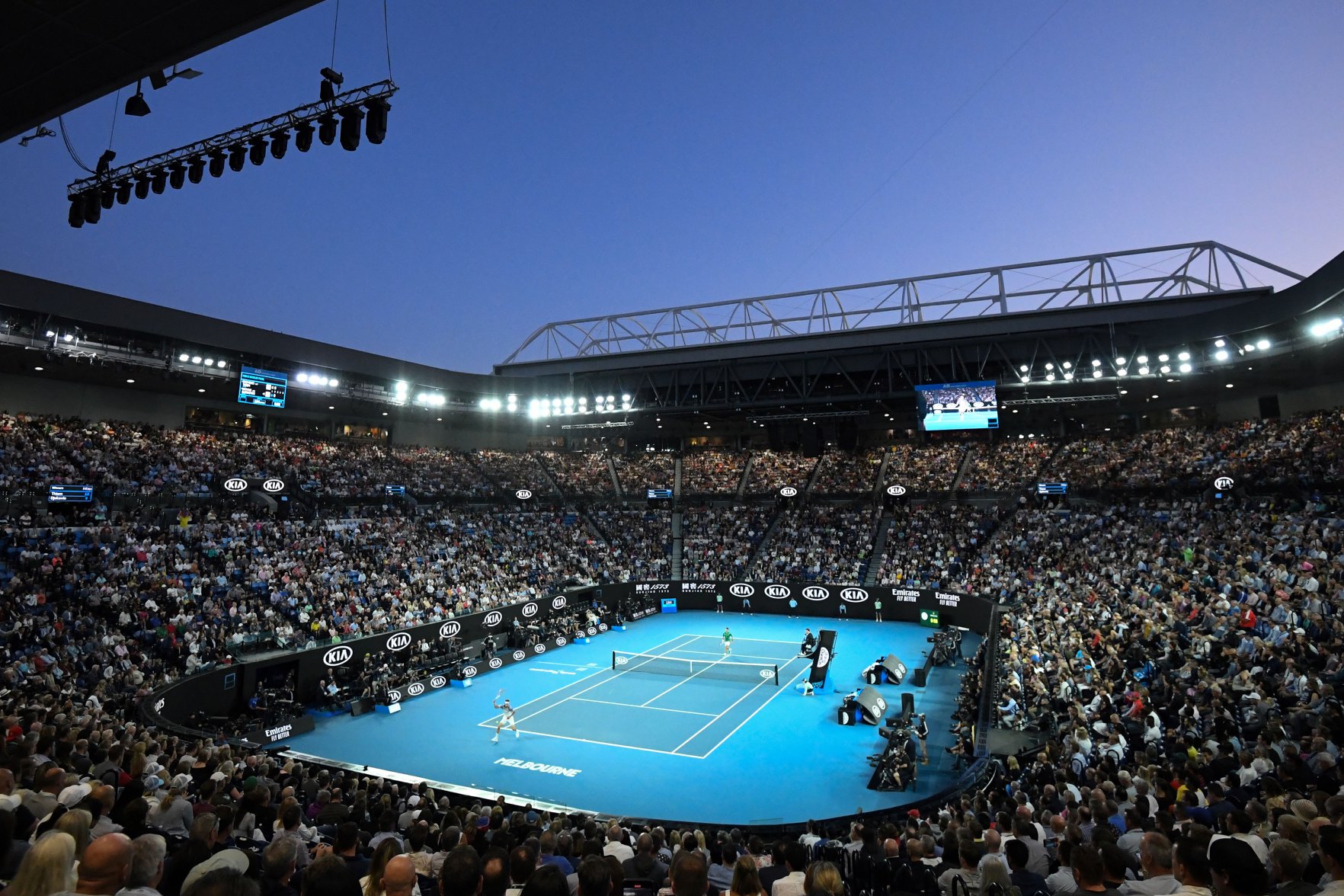
great review my friend, thanks!
LikeLiked by 1 person
Hi Julian great review. I also write about sport and technologies. Since I am carrying out a research related to smart court products, I would like to ask permission in order to use part of your articles to create an excellent article written in Italian for a website specialized on tennis. I am interested in particular in translating in Italian your brilliant table in order to clarify some concepts. In any case I will mention your article in case as the original one, if readers would like to get more details. Just let me know if this is possible.
LikeLiked by 1 person
Hi Andrea, thanks for the feedback and for checking with me. I am glad you found this of value. Resharing the article or parts of the article is the best compliment. Please let me know the link of the Italian article and I will reshare that too! Thanks!
LikeLike
I’m afraid the InOut devices are poorly made, unreliable and totally unsupported by the manufacturer. That is, Gregoire Gentil is utterly uninterested in repairs/replacements for his shoddily constructed plastic tat… he basically just ignores you and hopes you go away as he’s already banked your cash.
If you want to pay to be a beta (or alpha-) tester for the wretched things, then be my guest but don’t say you haven’t been warned!
LikeLike
Hi Tesseractorion, thanks so much for sharing your experience and sorry that the InOut didn’t work out. If you are an iPhone user, you should consider trying out either the SwingVision or Eyes3 app. Hope that helps.
LikeLiked by 1 person
I’m not a iPhone user myself, but I do know some people who are, so hopefully they can try out those apps you’ve mentioned.
As for InOut, I still suggest everyone give them a very wide berth until they can prove they’re actually a legitimate, productive enterprise. I have a feeling that will never happen (unless someone buys Monsieur Gentil out and improves the company by several orders of magnitude)!
LikeLiked by 1 person